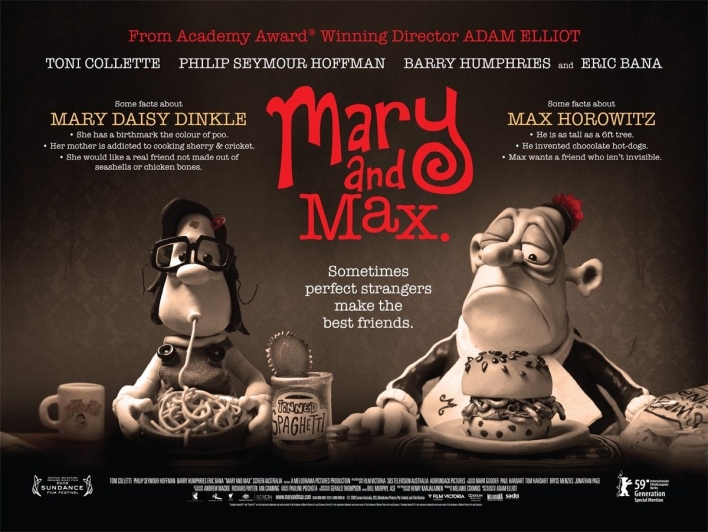
Mary and Max carries on our series of revisiting rubbish old movie reviews we did in order to spruce them up a bit! This stop motion (claymation) Australian film from 2009 is witty, funny, moving, poignant, and has a big old dollop of dark humour in there, too.
Its distinctive looks help it stand out, but its clever nature lift it way above many animated films and, almost a decade on from its release, we have a cult classic right here.
Mary and Max
Adam Elliot was responsible for this one and he wrote and directed the thing. It stars the vocal talents of the still very much-missed Philip Seymour Hoffman (in a rare piece of voice acting work) as Max.
Plus there’s Bethany Whitmore/Toni Collette as young/older Mary, Renee Geyer as Mary’s very drunken mother, and Barry Humphries as the narrator. There’s a lot to love here and it’s a love letter, of sorts, to mental health disorders.
Plot time! Accustom yourself to one Mary, a lonely, sweet-natured schoolgirl in 1970s Australia who is an outsider.
Her parents don’t pay her much attention, and her mother is always colossally drunk, so Mary takes an interest in TV, condensed milk, her pet rooster Ethel, a TV series called the Noblets, and the boy who lives next door. She also has a prominent birthmark on her forehead.
In a fit of loneliness, she decides to arbitrarily write a letter to someone in America. The random dude she picks turns out to be Max, an obese chap with Asperger Syndrome.
Max, also a loner, suddenly has his eyes opened to a world he doesn’t understand. He stares at Mary’s initial letter for 18 solid hours before finally deciding to respond.
What emerges is a cute relationship between two outsiders on the other side of the planet, with Mary and Max swapping ideas about things and sharing their love for same TV show – the Noblets.
Whilst they discuss their fears and issues, Max also teaches Mary his weird recipe – the chocolate hotdog (a bar of chocolate in some bread), which goes some way to explaining Max’s morbid obesity – as well as dropping some terrible clangers about how life works to Mary’s innocent mind.
Over the years, their relationship develops. Max’s obesity worsens, as does his lust for chocolate hotdogs. They share the trials and tribulations of their life with honesty and eventually decide to meet, but an oddball friendship isn’t really what the film is about.
It should, primarily, be remembered for its open and frank look at mental health disorders, such as social anxiety, as well as the nature of loneliness and how one can go about overcoming it.
Aspergers also gets quite a lot of screen time, with Max ultimately emerging as something of a champion for the cause.
The duo’s contemplation on life, complemented by the wit of the script, and general confusion the characters have for life, make for a unique viewing experience. It’s darkly amusing, too, so have your hankies ready for the ending, but its charming nature will bowl you over.
Penguin Cafe Orchestra
Simon Jeffes and Helen Liebmann formed the Penguin Cafe Orchestra in the 1970s and the avant-pop band went on to tour extensively over the next two decades.
Jeffes died in 1997, unfortunately, so the musical troop hasn’t been around much since, but you’ll have likely heard of lot of its music without even realising it.
It features quite a lot in Mary and Max, but the PCO’s music has featured in quite a lot of other stuff over the years.
In the UK, it famously ran in a phone commercial for years and we’re still always hearing the music popping up in various TV shows and other big budget films, so it’s clearly enduring stuff. Kudos, dudes.

Mary and Max sound like amusing characters!
LikeLiked by 1 person
Most certainly is a wonderful film!
LikeLike